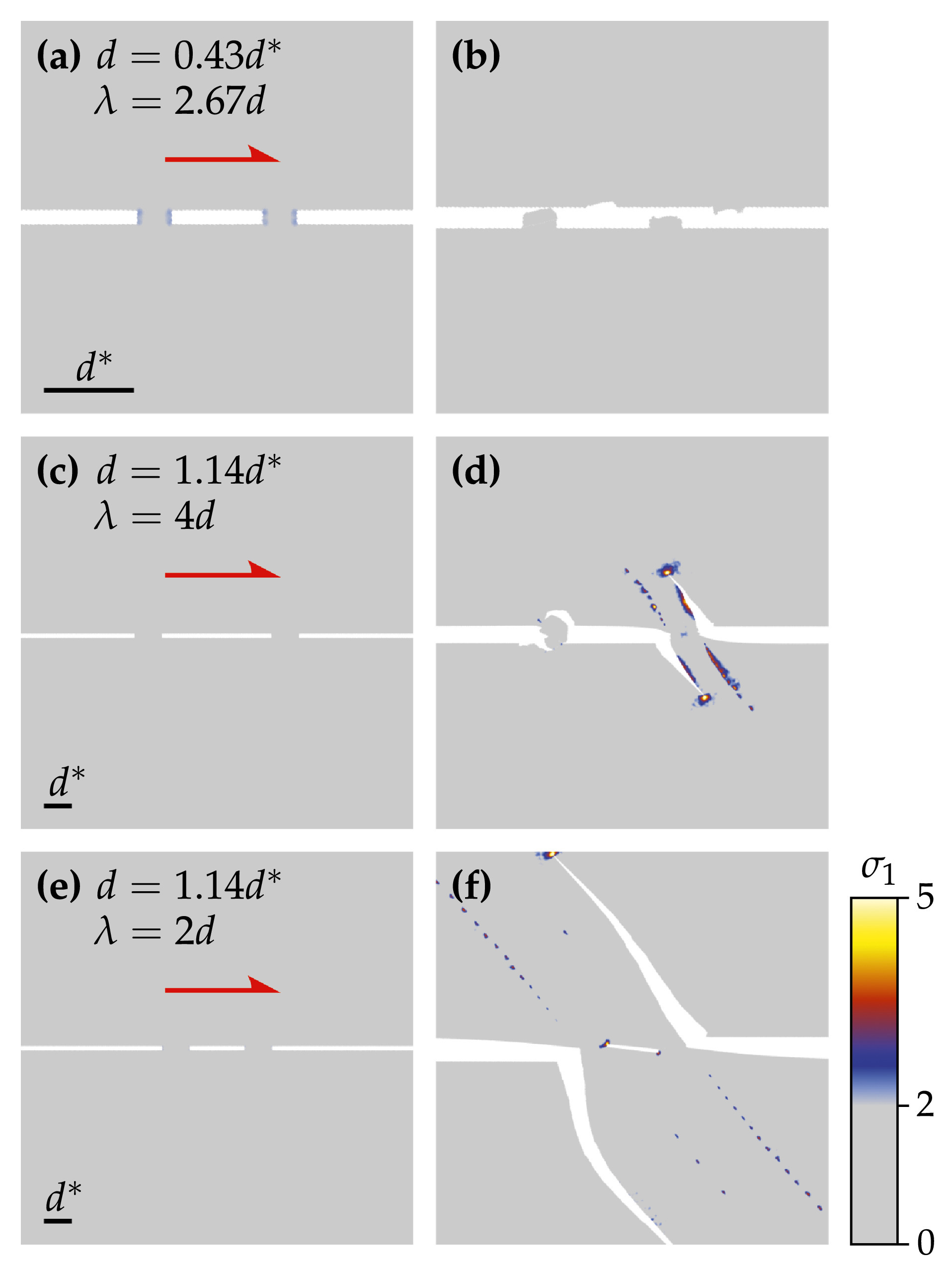Adhesive wear and interaction of tangentially loaded micro-contacts
S. Pham-Ba, T. Brink, and J.-F. Molinari
International Journal of Solids and Structures
Published April 2020
See full text (at publisher)

Fig. 1 – Three different outcomes from two sheared micro-contacts
Abstract
Current engineering wear models are often based on empirical parameters rather than built upon physical considerations. Here, we look for a physical description of adhesive wear at the microscale, at which the interaction between two surfaces comes down to the contact of asperities. Recent theoretical work has shown that there is a critical micro-contact size above which it becomes energetically favorable to form a wear particle. We extend this model by taking into consideration the elastic interaction of multiple closely-spaced micro-contacts in 2D, with different sizes and separation distances. Fundamental contact mechanics solutions are used to evaluate the elastic energy stored by shearing the micro-contacts, and the stored energy is compared to the energy needed to detach a single joined debris particle or multiple debris particles under the micro-contacts. Molecular dynamics simulations are used to test the predictions of the outcome for various sets of parameters. Our model provides simple criteria to evaluate the energetic feasibility of the different wear formation scenarios. Those criteria can be used to rationalize the transition between mild and severe wear regimes and help define the notion of asperity.
Keywords: adhesive wear, wear transition, asperity interaction, boundary element method, molecular dynamics